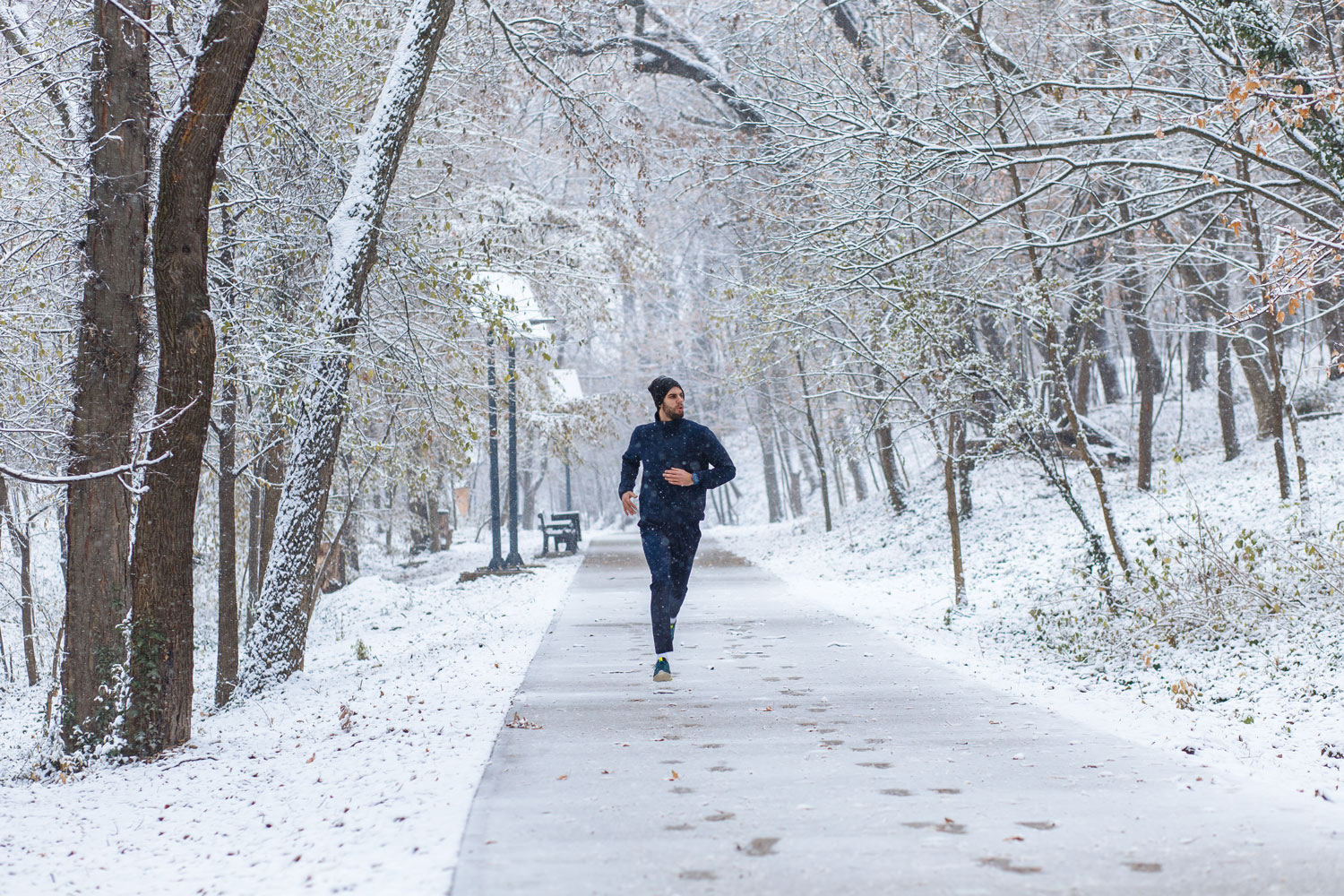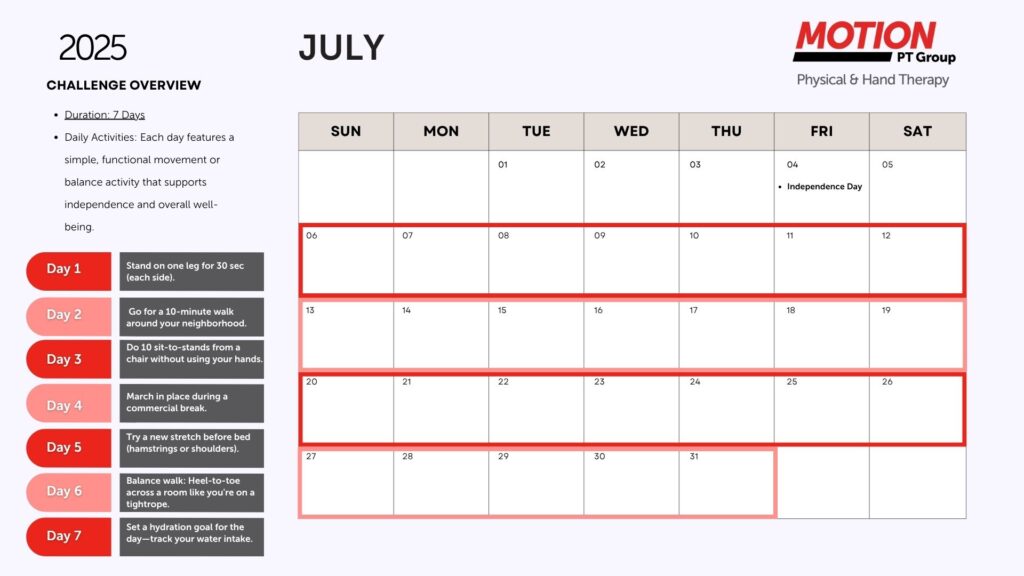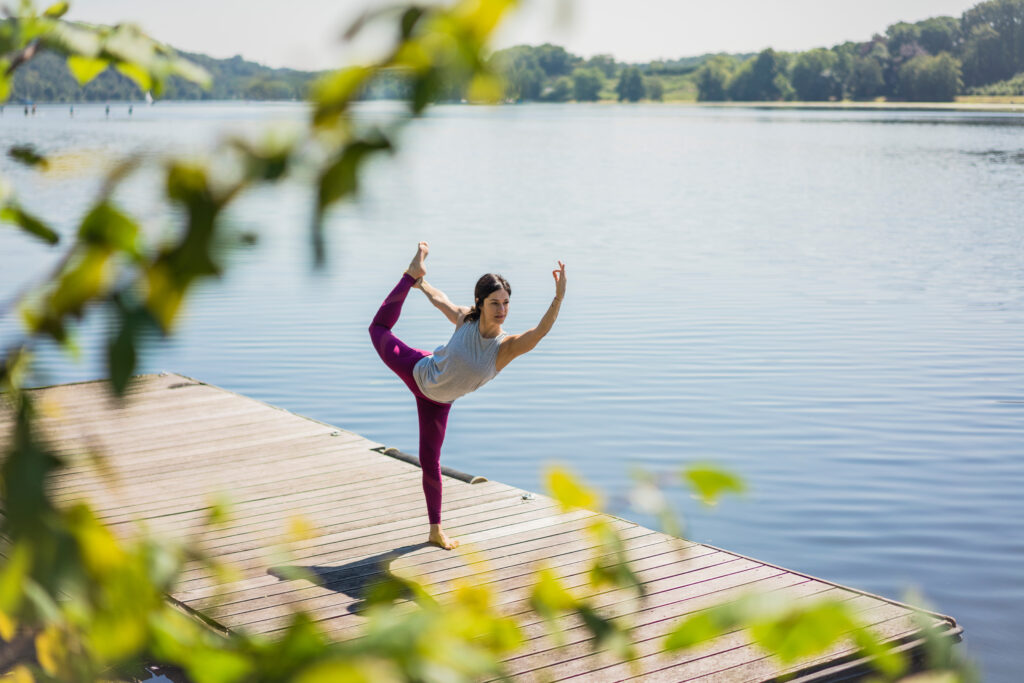Winter can bring cozy nights and holiday celebrations, but it can also create challenges for staying active. Cold temperatures, slippery sidewalks, and shorter days make it harder to keep up with outdoor workouts. But keeping active during the winter months is essential, especially for joint health, strength, and mobility. Indoor exercise routines can help you stay on track without worrying about the weather, and they’re a great way to enjoy a winter-friendly fitness routine!
MOTION therapists are here to share safe, practical, and effective indoor exercise ideas that will help keep you active, whether you’re looking to stay fit, recover from an injury, or maintain flexibility. These exercises are simple, adaptable, and perfect for getting moving during the colder months.
Strength and Flexibility Exercises
Strengthening your muscles and maintaining flexibility are key to keeping joints healthy and improving overall mobility. Here are some simple indoor exercises you can do without any special equipment:
Chair Squats: This exercise helps strengthen your legs and core. Stand in front of a sturdy chair, lower yourself as if you’re about to sit down, and rise back up before you touch the seat. Repeat for 10–15 reps to build lower-body strength.
Wall Push-Ups: Great for your arms, shoulders, and chest, wall push-ups are a safe alternative to traditional push-ups. Stand facing a wall, place your hands shoulder-width apart, and perform push-ups by bending your elbows and bringing your chest toward the wall. Start with 8–10 reps, working up as you get stronger.
Seated Marching: Perfect for those with limited mobility, seated marching strengthens your hip flexors and improves blood circulation. While seated, alternate lifting each knee toward the ceiling. Aim for 10–15 reps per leg.
Toe and Heel Raises: This simple exercise is excellent for strengthening the lower legs and improving balance. Stand and hold onto a stable surface for support, lift your heels off the ground, then slowly lower. For a variation, try lifting your toes off the floor as well. Aim for 10–12 reps.
Gentle Stretching Routine: Stretching your neck, shoulders, hamstrings, and calves can reduce tension and maintain flexibility. Try seated or standing stretches, holding each position for 20–30 seconds to fully relax and lengthen the muscles.
Low-Impact Cardio for Heart Health
Low-impact cardio is an excellent option for indoor exercise, as it gets your heart rate up without putting stress on your joints. Here are a few fun and effective options:
Marching or Jogging in Place: A few minutes of marching or jogging in place can elevate your heart rate and give you a quick cardio boost. Try doing this for intervals of 1–2 minutes, taking breaks in between to catch your breath.
Step-Ups on a Stair or Sturdy Platform**: Step-ups are great for cardio and leg strength. Step onto a sturdy platform or low step with one foot, then bring the other foot up before stepping back down. Do 10 reps on each leg to get a good rhythm going.
Low-Impact Dancing: Put on your favorite tunes and dance around your living room! Dancing is a fun, low-impact way to get moving, improve coordination, and release stress. Dance for 5–10 minutes to get your heart pumping and improve your mood.
Chair Cardio Exercises: For those with limited mobility, chair cardio exercises are a fantastic way to stay active. You can try seated jacks, mimicking the movements of jumping jacks while seated, or seated punches, which involve punching forward and to the sides while seated. Alternate movements for 1–2 minutes at a time.
Core Strengthening Exercises
Core strength is crucial for balance, stability, and protecting your back. These exercises target your core muscles without requiring any special equipment:
Seated Torso Twists: Sit upright on a chair, extend your arms in front of you, and twist your torso from side to side. This movement strengthens your obliques and improves spinal mobility. Aim for 10–15 twists on each side.
Standing Knee Lifts: Lift one knee toward your chest while engaging your core, then lower it back down and switch sides. This exercise builds core strength and balance. Try 10–15 reps on each leg.
Bridge Exercise: Lie on your back with your knees bent and feet flat on the floor. Lift your hips off the ground, engaging your glutes and core, then slowly lower back down. Start with 8–10 reps, working up as you feel stronger.
Modified Plank on a Table or Wall: If you’re not comfortable doing a traditional plank on the floor, try a modified version. Place your hands on a table or wall, step back, and hold a plank position for 10–15 seconds. This is a great way to work your core without putting strain on your wrists or lower back.
Balance and Stability Exercises
Balance exercises are especially important in winter to prevent slips and falls. These exercises help strengthen your stabilizing muscles and improve coordination.
Single-Leg Stands: Stand near a chair or wall for support, lift one foot off the ground, and balance on the other leg. Hold for 10–20 seconds, then switch sides. As you improve, try extending the time or adding gentle movements like reaching your arms forward.
Heel-to-Toe Walk: This exercise strengthens your lower leg muscles and improves balance. Place one foot directly in front of the other, like walking on a tightrope, and try to keep your balance. Repeat for 10–12 steps, holding onto a wall or surface if needed.
Side Leg Raises: Stand next to a wall for support, lift one leg out to the side, and lower it back down. This exercise improves hip strength and stability, which are key for balance. Aim for 10 reps on each leg.
Sit-to-Stand from a Chair: This simple movement is highly effective for leg strength and balance. Start seated, rise to a standing position without using your hands, then sit back down. Try for 10 reps, using your arms for support only if necessary.
Mobility Exercises for Joint Health
Keeping your joints mobile is essential during colder months, especially for those with arthritis or joint stiffness.
Ankle Circles: Sitting or lying down, extend one leg and rotate your ankle in circles. Try 10 circles in each direction, then switch legs. This helps maintain ankle flexibility and can be done daily.
Shoulder Rolls: Sitting or standing, lift your shoulders toward your ears, roll them back, and down in a smooth circular motion. Shoulder rolls relieve tension and improve shoulder mobility.
Cat-Cow Stretches for Spine Mobility: Kneel on the floor, arch your back while looking up (cow pose), then round your spine while looking down (cat pose). Repeat this gentle movement 5–10 times to relieve stiffness in your spine.
Winter may bring challenges, but it’s also an opportunity to focus on new ways of moving that support strength, flexibility, and endurance—all from the comfort of your home. These indoor exercises offer something for every fitness level, and you can easily adjust them to fit your needs. Start with a few exercises each day, and gradually build up to create a balanced, well-rounded routine.
Remember, if you’re unsure how to modify an exercise or want more guidance, consult your physical or occupational therapist. We’re here to help you stay active, safe, and healthy this winter. Embrace these indoor exercises to keep moving, boost your mood, and support your well-being, no matter the weather outside!




